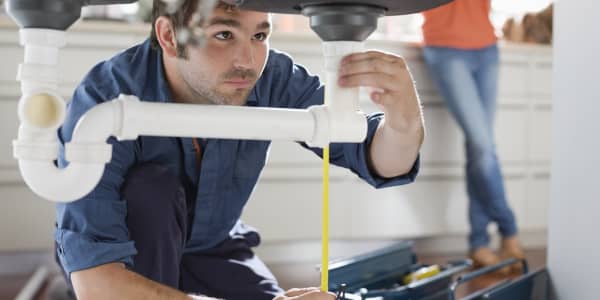From Marcus Welby to mobile M.D.
Mobile medicine is hot. A 2012 Pew Internet & American Life poll found 37 percent of Americans accessed apps to track their well-being, up from 17 percent in 2010.
Small-business owners and employees, in particular, may want to pay attention to the trend.
According to a Kaiser Family Foundation 2012 report, smaller companies are less likely to offer insurance to employees, or may keep premiums down by offering coverage of lower quality. Over half (58 percent) of covered workers at small firms now have a deductible of a $1,000 dollars or more, according to a 2013 study from Kaiser.
"[Personal technology's use] will become pretty widespread as people pay more out of pocket for insurance," said Dr. Patricia Salber, an internist who blogs about wellness at TheDoctorWeighsIn.com.
Because of Affordable Healthcare Act incentives, businesses have also been early adopters.
What's coming next? A confluence of medicine, nanotechnology, sensor science, social networks and smartphones.
—By Bob Diddlebock, Special to CNBC.com. Additional reporting by Roy Luo, CNBC.com
Posted 18 May 2014
If I only had a heart (app)
Care Beyond Walls and Wires, a pilot project at the Flagstaff Medical Center in Arizona, uses remote monitoring devices to treat at-home patients suffering from congestive heart failure, a condition that nearly 5 million Americans are living with, according to the American Heart Association. The telemedicine-enabled program combines remote monitoring tools and smartphones to provide constant accessible updates on health status, allowing patients and care providers to co-manage the trials of heart failure. The result: fewer hospital re-admissions and emergency-room visits, which has cut per-patient health costs over six months from $136,020 to $43,703.
Congestive heart failure affects 5 million Americans, according to Emory Healthcare, and costs over $10 billion, according to the Healthcare Cost and Utilization Project.
In full color
University of Cambridge researchers in the U.K. have developed a smartphone app, Colorimetrix, that sharpens the accuracy of colorimetric urine tests for pH, protein and glucose levels. Colorimetric strips are cheap and easy to use for diagnosing and monitoring a variety of diseases but are often hard to read and interpret.
Colorimetrix solves this problem by using a smartphone's camera to provide consistent spectrum analysis for a variety of strips, tests, assays, microplates and solutions in a simple and understandable format. The mobile app costs several hundred dollars, an order of magnitude lower when compared to the use of a lab-based $3,000 reflectometer or spectrophotometer.
Medicare spends $8.2 billion and overspends about $910 million on laboratory testing, according to the Department of Health and Human Services.
Sugar, sugar
A company called Telcare has developed a Food and Drug Administration–approved smartphone-compatible blood glucose meter to manage diabetes. The wireless-enabled meter automatically sends glucose measurements online for easy access for users and doctors. When paired with support services, the meter has helped drop the annual cost of treating a patient by $3,000 due to fewer hospitalizations and ER visits.
That's no small issue, considering that diabetes is such a prevalent chronic disease in the U.S., afflicting 8.3 percent of the nation's population and costing $174 billion a year to treat, according to the Centers for Disease Control and Prevention.
All hours medicine
Virtuwell, an online clinic launched in 2010 by the nonprofit HMO HealthPartners to diagnose and treat 40 simple medical conditions, reports an average savings of $88 per patient episode over care in a doctor's office. The service provides 24-hour access to licensed nurse practitioners who can diagnose and write prescriptions for conditions, like sinus and urinary tract infections, for a per-session price of $45 or lower.
In general, disease identification and prevention can lower hospital admissions and lower costs by up to $136 per month per member, according to a study by the Rand Corporation.
Your electric company
AliveCor makes a $199 gadget that attaches to a smartphone and lets patients take their own electrocardiogram and get an interpretation almost instantly. The peripheral converts electrical signals into a readable ECG strip, allowing patients better access to monitoring that can detect heart problems before they become serious.
Blood work
Spot On Sciences, a Texas start-up, is developing a small box called HemaSpot that lets users draw blood at home and then ship the sample to a lab for analysis. HemaSpot uses dried-blood spot technology to make the blood sample extremely stable for transportation and handling. Although the HemaSpot is still in an investigational-use phase, the projected retail cost of the product is only $12.
A $50 billion market (if they get it right)
The joke among health-care professionals is that each organ in the body will soon have an Internet Protocol address stamped on it for tracking as the concept of wellness care slowly supplants the centuries-old practice of sick care.
Thousands of companies—including Apple, Google, Samsung, Qualcomm and AT&T—are developing smart fabrics, contact lenses, rings, smart badges, wrist computers, skin tattoos and even swallowable monitors. On the insurance front, companies like Aetna, Kaiser Permanente and UnitedHealth Group are developing digital health and wellness applications. It's a market that could generate more than $50 billion in revenue by 2020, according to Grand View Research.
"The industry is in its infancy, so business operations are not well developed," according to the Brookings Institution.
Physician buy-in will take time as data-accuracy, privacy and treatment-outcome issues are taken up. The FDA's role in reviewing and regulating apps and technology is still in its start-up phase.
That said, the self-monitoring trend shows no sign of stopping.
"Patients will take care of themselves more and more," Dr. Salber said. "Dollar issues will help people figure out what they can do for themselves in taking charge of their health issues."





